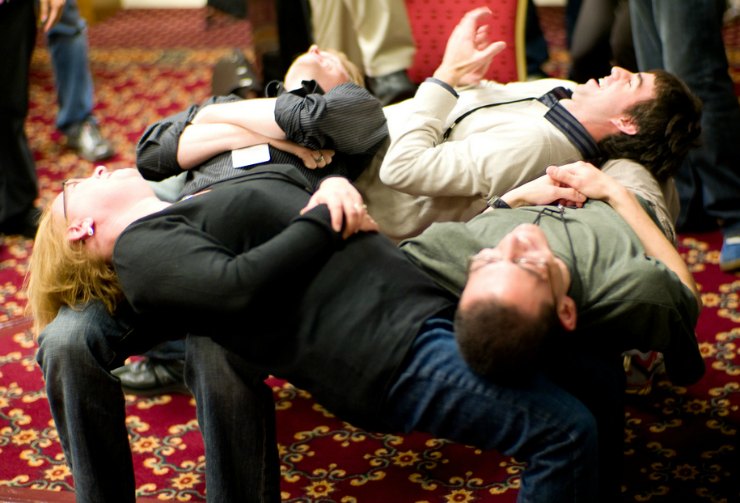When I’m asked to facilitate team building sessions, a lack of trust is often one of the core problems that needs to be addressed.
As people tell me stories about what’s going on, and I observe the way individuals behave; the low level of trust becomes glaringly obvious.
If a team is ever going to grow and thrive, the members of that team need to trust each other. It is especially important that team members trust the leader, and that the leader trust the team members.

So what’s a leader who wants to build trust to do? I’ve heard plenty of people tell me that you either have trust or you don’t. Implied in that statement is that trust is magic. It can’t be understood. I disagree.
Trust is a result of concrete behaviors. If you want to build trust on your team, there are things a leader can and should do. Here are ten ideas to get you started. Perhaps you can thinking of others.
1. Be trusting
It starts here. If you want people to trust you, then you need to trust them. For me this means assuming that people are competent, dependable, and act in good faith. With these ideas in my head, trusting behaviors will follow. Will you get burned by this? Most likely. Still, give people the benefit of the doubt, and soon they will start following your lead.
2. Take some personal risk
One reason you want people to trust you and each other is so that they will take reasonable risks. You’re the leader. That means you go first. This might look like sharing feelings, respectfully challenging a superior, or admitting when you’ve screwed up.
3. Reinforce dependability
I trust people who are dependable. When people do what they promised to do, regardless of how seemingly insignificant it was, notice and acknowledge it publicly. People are often more dependable than we think. It’s our job as leaders to start changing that perception by pointing out when people do follow through.
4. Demonstrate open communication
Teach people to say what needs saying in a respectful and direct manner. A lot of times people don’t trust another person because they are making assumptions that aren’t true. We need team members to make their thoughts more transparent so that we can deal with reality rather than assumptions.
5. Provide realistic challenges
A little adversity is a good thing when it comes to building trust. In tough situations, people tend to pull together. If you’ve provided a challenge that people can rise to and meet, they will now have this shared experience of overcoming an obstacle. Trust will likely follow.
6. Focus on ideas and behaviors
Let’s face it, leaders need to make judgments about what are and are not successful results and desirable behaviors. People will never trust each other if they believe they are going to be harshly judged or personally attacked. That’s why when you need to be critical, they need to know you are not focusing on them, but rather the situation.
7. Yield control
The person I most trust is myself. When I’m in charge, I’m pretty comfortable I’m not going to do anything to harm myself. Using this idea in a team setting means that you give other people a chance to be in control once in awhile.
8. Teach conflict management techniques
A lack of trust is often the result of poorly managed conflicts. By encouraging and supporting people in working out conflicts among themselves, you will see trust increase over time. Here’s some conflict training I provide to groups attempting to do this.
9. Lighten up
When things get too heavy and serious, stress levels go up and trust tanks. You need to break the tension by making it okay for people to laugh when things don’t go according to plan.
10. Practice patience
At the end of the day, you can follow all these strategies for building trust and you still might not see the impact you hoped. That’s because trust is earned with time. Give people a chance to see the difference, consider what it means, believe in it over time, and eventually make the change towards more trust.


